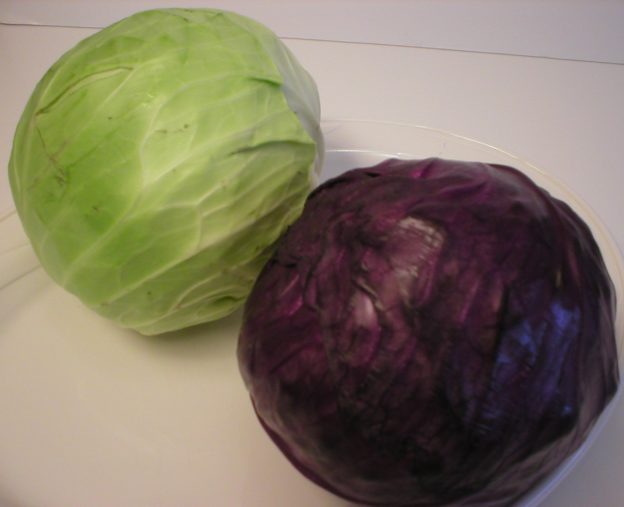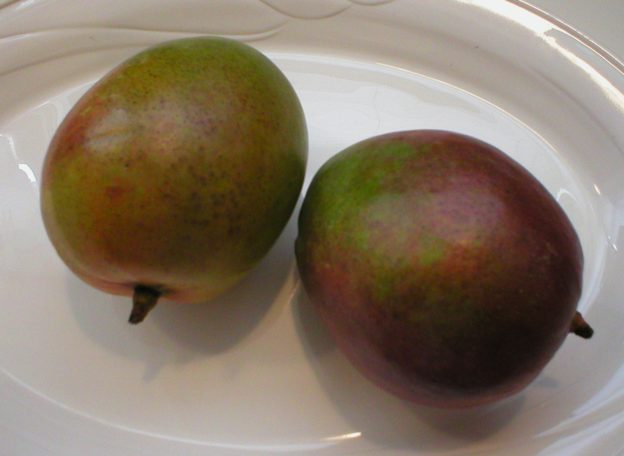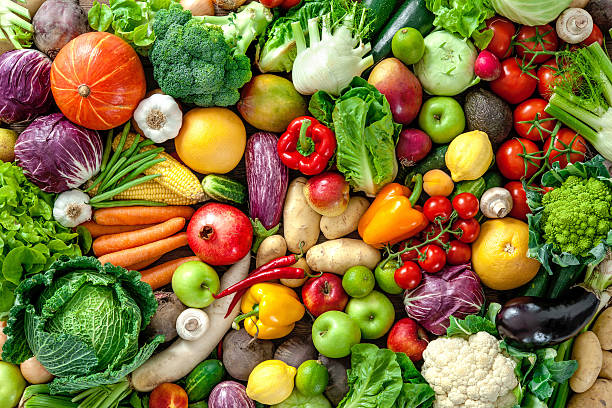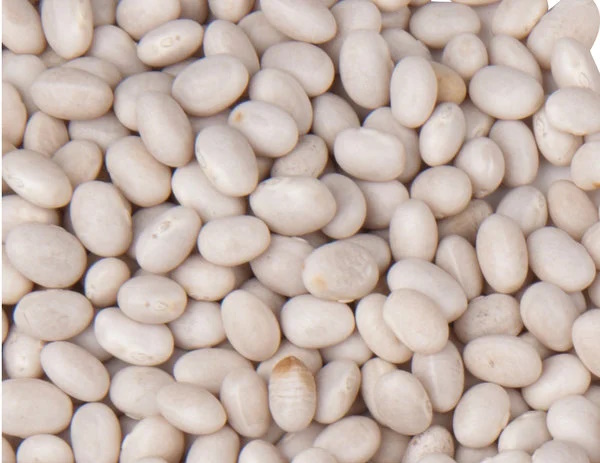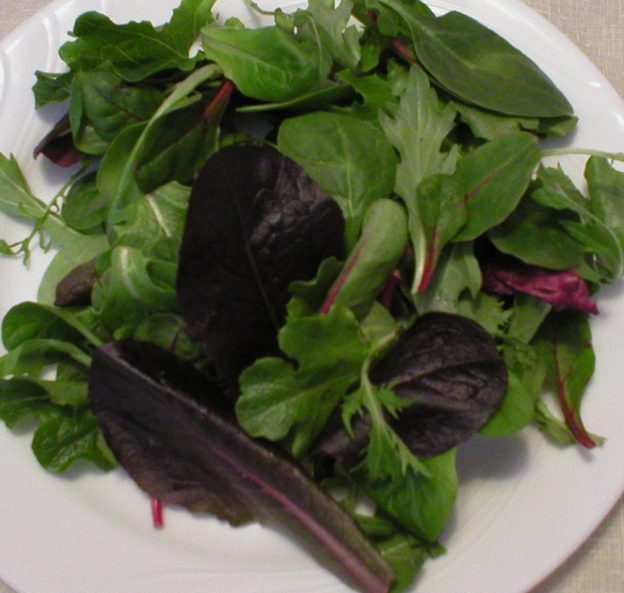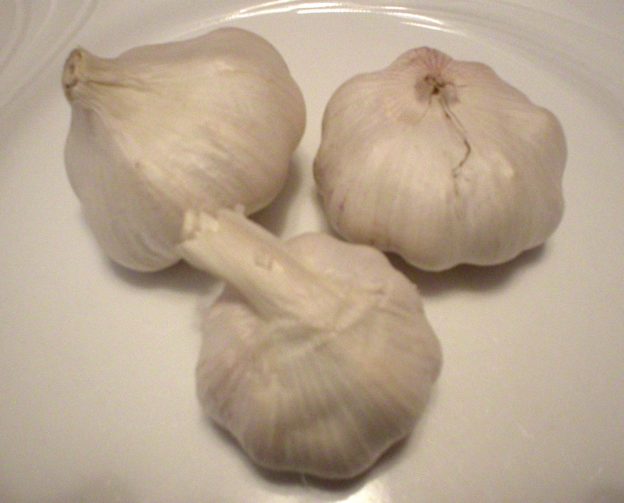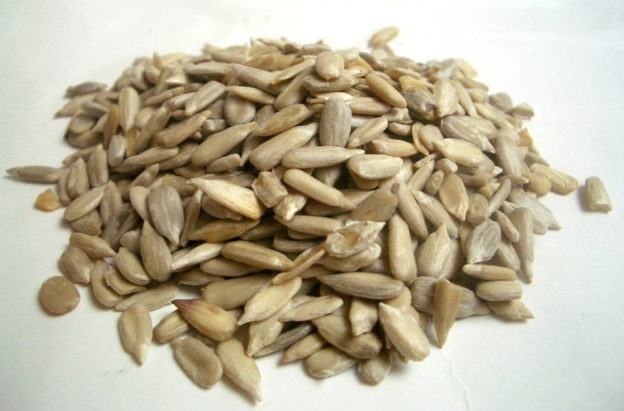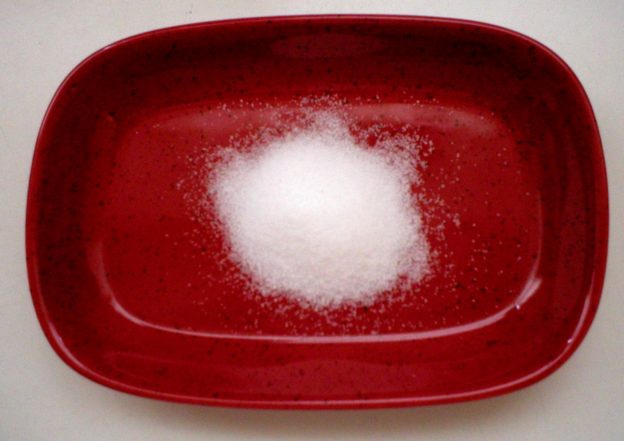Ginger 101 – The Basics (REVISED)
About Ginger
Ginger (Zingiber officinale) is a plant that originated in Southeast Asia, and is closely related to turmeric and cardamom. It has a thick underground stem (rhizome) that produces roots and shoots. The plant can grow up to three feet high. The rhizome is commonly used as a spice, and can be referred to as ginger root, or simply ginger. The flesh of ginger can be yellow, white or red, depending on the variety. After the rhizomes are harvested, they are washed and dried in the sun, then used for culinary or medicinal purposes. It can be used fresh, dried, powdered, or as an oil or juice. Ginger is used in a wide variety of recipes and also cosmetics. It has been used for its medicinal properties for thousands of years. Its pungent and spicy aroma, flavor, and medicinal properties are due to important compounds including a variety of gingerols, shogaols, and others which have strong anti-inflammatory and antioxidant effects. Ginger grows well in a warm, damp climate, with most of the world’s ginger being grown in China, India, Australia, and Jamaica.
Nutrition and Health Benefits
Ginger is high in Vitamin C, Vitamin B6, magnesium, potassium, copper, manganese, fiber, water, and an array of important phytonutrients that give ginger its medicinal properties.
Precautions. Ginger root is generally considered to be safe with up to 4 grams a day usually being without issue. With higher doses (such as eating a whole knob at one time), there is potential for gastrointestinal discomfort, allergic reactions, prolonged bleeding, central nervous system depression, and heart arrhythmia. Higher doses may interfere with the action of the drug warfarin which may lead to bleeding. Excessive intake of ginger can lower blood pressure too much leading to heart arrhythmia in a small number of people. It may also aggravate gallstone formation by increasing bile acid secretion. Therefore, it is wise to consume ginger appropriately and avoid excessive intake. To be safe, check with your doctor if you’re on medications before taking large amounts of ginger.
Antioxidant protection. Antioxidants are important in the body for fighting free radical molecules and reducing oxidative stress. Free radicals are naturally produced in the body, so antioxidant protection is vitally important in neutralizing these harmful molecules. Many plants, including ginger, are rich sources of antioxidants. Regular consumption of such compounds significantly reduces lipid oxidation and our risk of disease, while providing anticarcinogenic and antimutagenic activities. Because of its antioxidant activity, including ginger in the diet can help to boost the immune system and reduce our risk of disease.
Digestive health and nausea relief. Ginger has been used for centuries as a remedy for nausea and indigestion. This is a folk remedy that truly works. The phytochemicals in ginger appear to accumulate in the gastrointestinal tract exerting anti-inflammatory effects. This helps to relieve GI pain and nausea. Studies found that consuming between 1 and 2 grams (1/2 to 1 teaspoon) of ginger could help reduce nausea and vomiting, morning sickness, motion sickness, upset stomachs, and side effects from chemotherapy. Since ginger is so potent, large amounts should not be taken unless under a doctor’s care.
Ginger may help manage chronic indigestion by speeding up the passage of food through the stomach. Functional dyspepsia is when a person has indigestion (abdominal pain, bloating, feeling too full, belching, and nausea) for no clear reason. It often occurs with irritable bowel syndrome (IBS). In a study reported in the April 2015 issue of the journal Evidence-Based Complementary and Alternative Medicine, researchers found that consuming a ginger and artichoke preparation for four weeks before eating lunch and supper significantly improved the symptoms of indigestion in those with functional dyspepsia, when compared with taking a placebo. The researchers concluded that taking a preparation of ginger and artichoke leaf appears to be safe and effective in the treatment of functional dyspepsia.
Also, eating ginger has been found to reduce fermentation of food by bacteria in the intestinal tract. This can help to relieve the discomfort of gas, bloating, and constipation.
Anticancer benefits. Ginger has been found to be effective against various cancers, particularly those of the gastrointestinal tract including pancreatic cancer, liver cancer, colorectal cancer, cholangiocarcinoma (a type of cancer affecting the bile ducts of the liver), among others, including breast cancer. Experimental studies have shown that ginger’s protective effects against cancer are due to the activity of compounds including various gingerols and shogaols. Gingerol appears to inhibit cancer cell growth, adhesion, invasion, and motility and even selectively kill cancer stem cells. Animal studies have shown that shogaol can inhibit metastasis in triple negative breast cancer cells. Ginger has also been found to enhance the effect of drugs used to treat cancer, in addition to treating the nausea and vomiting associated with chemotherapy. Regarding cancer, it appears you can’t go wrong with adding some ginger to your diet, both as a preventative and during traditional treatment.
Reduced cholesterol and risk of heart disease. It’s well established that high levels of cholesterol are linked to an increased risk of heart disease and stroke. Some studies suggest that adding ginger to your diet can help reduce LDL cholesterol, total cholesterol, and triglycerides. In a study reported in the September 2008 issue of the Saudi Medical Journal, researchers gave subjects 1-gram capsules of ginger three times a day for 45 days. The treatment group members experienced a significant reduction in triglyceride, cholesterol, and LDL levels when compared with the control group. The researchers concluded that ginger has a significant lipid lowering effect compared to a placebo. Similar results were discussed in a meta-analysis of 12 clinical trials, reported in the April 2018 issue of the journal Phytomedicine, and also in a clinical trial reported in the February 2018 issue of Clinical and Medical Biochemistry. It appears to be well established that the addition of ginger to the diet can help to keep blood cholesterol levels in check.
Reduced blood sugar levels. Some research suggests that ginger may have anti-diabetic properties. In a study reported in the May 2022 issue of the journal Complementary Therapies in Medicine, researchers examined ten trials of participants given from 1,200 to 3,000 milligrams (mg) of ginger a day for 8 to 13 weeks. They found a significant reduction in fasting blood sugar and HbA1c in people with Type 2 diabetes after taking ginger supplements, when compared with the control group. They also noted reductions in several other blood markers indicative of oxidative stress, a risk factor for heart disease. A similar study was reported in the Winter 2015 issue of the Iranian Journal of Pharmaceutical Research where Type 2 diabetic subjects were given 2 grams of ginger powder a day for 12 weeks. Fasting blood sugar along with a number of other blood markers important in the monitoring of diabetes were significantly improved in the treatment group when compared with the control group. Researchers concluded that ginger may have a role in alleviating the risk of some chronic complications of diabetes. It appears ginger may reduce the risk of developing Type 2 diabetes and related heart disease, along with managing the condition in those who already have diabetes.
Reduced menstrual pain. Ginger may help to relieve dysmenorrhea, also known as menstrual pain. In the December 2018 issue of the Taiwanese Journal of Obstetrics and Gynecology, researchers conducted a crossover clinical trial involving 168 women from 18 to 26 years of age. They were divided into two groups, with one group taking Novafen (a drug used for menstrual pain), while the other group took ginger. The women took their assigned treatment for two cycles, then were switched to the other treatment. Pain levels were measured before, during, and after treatment. They found that ginger was just as effective at treating menstrual pain as the drug Novafen. They concluded that treatment with natural ginger was the preferred method over the use of the synthetic drug.
In the December 2015 issue of Pain Medicine, researchers reported a review of available evidence (29 studies) for the efficacy of ginger for treating primary dysmenorrhea. They found that the randomized clinical trials they reviewed provided suggestive evidence for the effectiveness of taking 750 to 2000 mg of ginger powder during the first 3 to 4 days of the menstrual cycle for reducing the pain of primary dysmenorrhea.
Potential antimicrobial benefits. The strong compounds in ginger have antimicrobial properties that could make it useful for fighting bacterial and fungal infections. Laboratory studies have found that ginger may be effective against Staphylococcus aureus (S. aureus), Escherichia coli (E. coli), Candida albicans (C. albicans), and others. These microbes are well known for causing a range of health issues. The compounds in ginger have also been found to be effective against periodontal bacteria. With microbes becoming increasingly resistant to drugs, coupled with possible drug-related side-effects, natural means of fighting such pathogens is important. More research in this area is needed, while the outlook is promising.
Relief from osteoarthritis pain. As reported in a 2014 issue of the International Journal of Physiology, Pathophysiology, and Pharmacology, ginger has been shown to provide a potentially significant role in the treatment of osteoarthritis. Studies have revealed that ginger can be used to treat pain associated with osteoarthritis without the potential harmful side effects of common pain medications.
Neuroprotective effects. Ginger has been shown to have neuroprotective benefits, believed to stem from the antioxidant properties of its phenolic and flavonoid compounds. Since oxidative stress and chronic inflammation appear to be key drivers of cognitive decline, ginger may help protect us from degenerative diseases such as Alzheimer’s disease, Parkinson’s disease, and multiple sclerosis. Animal studies suggest the antioxidants and bioactive compounds in ginger can inhibit inflammatory responses that occur in the brain, which may help to prevent cognitive decline.
How to Select Fresh Ginger
Choose pieces that look fresh with smooth skin and no blemishes. They should feel heavy for their size. Avoid pieces that are soft, wrinkled, or moldy.
How to Store Ginger
Store unpeeled ginger tightly wrapped in plastic (or in a zip-lock bag with the air removed) and in the refrigerator. Be sure it is completely dry before wrapping it, or that will invite mold. It should last about a month in the refrigerator when stored properly. Throw it out if it develops mold.
How to Prepare Ginger
Although the skin of fresh ginger is edible, it is usually peeled before being eaten. The best way to peel ginger without losing a lot of the flesh inside is to scrape it with the tip of a metal teaspoon. Hold the ginger root in one hand and the teaspoon in the other hand. Firmly scrape the tip of the spoon along the outer edge of the root and the peel will come off. Once the peel is removed, use the ginger as desired.
How to Preserve Ginger
Ginger is sold fresh, dried, crystallized, and even pickled.
Peeled fresh ginger can be stored for weeks in a glass jar covered with vodka or some other alcoholic beverage.
Fresh ginger can be stored in the freezer. Simply peel, then grate the ginger. Put it on a parchment-lined baking tray in increments you plan to use at one time (i.e., in one teaspoon mounds). Freeze until solid, then transfer the mounds to an air-tight container and return them to the freezer. They should keep for about 6 months. It can be used frozen or will quickly thaw when needed.
Ginger can also be frozen by simply cutting the unpeeled root into one-inch chunks. Place chunks on a plate or baking sheet and freeze. Transfer the frozen pieces to freezer bags and return them to the freezer. For the best flavor, use frozen ginger within 6 months. It will be safe to eat beyond that, but the quality and flavor may deteriorate.
To dry fresh ginger, peel and cut it into small pieces, then follow manufacturer’s directions for drying in your dehydrator.
Fresh ginger may also be pickled. This is a common way to preserve ginger since the pickling liquid balances out the flavors when used with other foods. Pickled ginger is known as gari. It is made from young ginger because the flavor is fresher and the stem is more pliable than that of mature ginger. Younger ginger has pink projections off the stem and is most commonly found in Asian ethnic markets. If you can’t find young ginger, the mature root may be pickled. It can be blanched in water for five minutes to soften it. Also, the longer the ginger is preserved in a rice vinegar and sugar mixture, the softer it will become.
Quick Ideas and Tips for Using Ginger
* Use ginger anywhere you want its sharp spicy flavor. This includes dipping sauces, dressings, rubs, pesto, teas, and even smoothies.
* When ginger is added during cooking will affect the flavor of the dish. If you want the sharp, spicy flavor of fresh ginger, add it toward the end of cooking. When added early in the cooking process, the flavor will mellow and blend with other seasonings in the dish. An example of the latter is when powdered ginger is added to gingerbread batter. After being baked, the bread has a mild, sweet flavor that reflects the well-cooked ginger combined with other spices in the mix.
* Using a microplane grater when preparing ginger will yield finely grated ginger with the least amount of effort. This is a far easier and more efficient option than trying to finely chop it with a knife.
* Try ginger tea with lemon for a comforting drink, especially if you have a sore throat, nausea, or stomach upset. Take a 1-inch chunk of fresh ginger and slice it thinly. Place the sliced ginger in 1 cup of water in a saucepan. Heat the mixture and simmer for 5 to 10 minutes. The longer it simmers, the stronger the flavor will be. Remove the pot from the stove and pour the mixture into a strainer over a mug. If desired, add a slice of lemon and some honey for sweetness.
* Add ginger to juices and smoothies.
* Add ginger to a raw beet salad.
* Ginger, carrots, and sweet potato are a flavorful combo for soup.
* Fresh ginger is used more often in savory dishes, whereas dried powdered ginger is used more often in sweet baked goods, spice blends, slow-cooked dishes (such as stews), beverages and spice rubs.
* To impart a mild ginger flavor to cooked dishes, slice the ginger into discs. Add the slices to your dish as it is cooking. Once enough flavor has infused into your food, remove the pieces.
* Crystallized or candied ginger is often found in the baking or candy section of grocery stores. It contains ginger, granulated sugar, and water. This form of ginger is chewy and sweet. Overall, candied ginger has less heat and more sweetness than fresh ginger. It may be eaten on its own or used in baked goods like sweet breads, biscuits, pies, and cookies.
* To determine if your fresh ginger has spoiled, first examine it visually. The outer layer should be papery, while the interior should be firm and yellow. If the ginger root appears soft, has wrinkles or signs of mold, it has spoiled and should be discarded. If your ginger passes the visual inspection, yet you’re still not quite sure, take note of the smell and flavor. Ginger that is low-quality or spoiled will not be as pungent in taste or aroma. If the ginger is bland but not moldy, it is still safe to eat, but may not impart the flavor you expect in your dish.
* If a recipe calls for fresh ginger and you don’t have any, dried powdered ginger may be used as a substitute. For one tablespoon of minced or grated fresh ginger, try 1/8 to ¼ teaspoon of dried ginger powder. Taste the recipe and adjust as needed. Since ginger is so strong in flavor, it is best to add a small amount of powder at a time and taste as you go, so you don’t add too much. It’s also helpful to know that fresh ginger has a much stronger flavor than the powdered form.
Herbs and Spices That Go Well with Ginger
Anise, basil, cardamom, chili pepper flakes, chili powder, cilantro, cinnamon, cloves, coriander, cumin, curry powder, fennel seeds, garam masala, lemongrass, mint, mustard, nutmeg, parsley, pepper, saffron, salt, turmeric, vanilla, wasabi
Foods That Go Well with Ginger
Proteins, Legumes, Nuts, Seeds: Almonds, beans (green), beef, cashews, chicken, chickpeas, edamame, fish and other seafood, lentils, oysters, peanuts, peas, pork, poultry, salmon, sesame seeds, snow peas, sugar snap peas, tahini, tofu, tuna, turkey
Vegetables: Asparagus, bell peppers, bok choy, broccoli, broccolini, cabbage, carrots, cauliflower, celery, chili peppers, eggplant, fennel, garlic, greens (bitter, such as Asian greens and collards), leeks, mushrooms, okra, onions, parsnips, potatoes, pumpkin, rhubarb, scallions, spinach, sprouts (i.e., bean sprouts, mung bean sprouts), winter squash, sweet potatoes, tomatoes, watercress, yams, zucchini
Fruits: Apples, apple cider, apricots, bananas, berries, blueberries, cherries, coconut, cranberries, dates, figs, fruit (in general), grapefruit, grapes, kiwi, lemon, lime, lychees, mangoes, melons, oranges, papaya, passion fruit, peaches, pears, pineapple, plums, raisins, tamarind
Grains and Grain Products: Buckwheat, corn, noodles, oats and oatmeal, pasta, rice, seitan, wheat and wheat berries
Dairy and Non-Dairy Products: Coconut milk, cream, ice cream, yogurt
Other Foods: Agave nectar, chocolate (white and dark), fish sauce, honey, maple syrup, miso, molasses, oil, rum, sake, sesame oil, soda water, soy sauce, sugar, vinegar
Ginger has been used in the following cuisines and dishes…
African cuisines, Asian cuisines, baked goods (i.e., breads, cakes, cookies, muffins, pies), beverages (i.e., ales, beers, teas), Caribbean cuisine, Chinese cuisine, curries (esp. Asian and Indian), deep-fried dishes (i.e., tofu, vegetables), desserts, dips, ginger ale, gingerbread, hoisin sauce, ice cream, Indian cuisine, Jamaican cuisine, Japanese cuisine, low-salt dishes, marinades, Moroccan cuisine, pasta dishes, pickled ginger, pilafs, salad dressings, sauces, slaws (esp. Asian), soups (i.e., Asian, hot-and-sour, sweet potato), Southeast Asian cuisines, stews (i.e., Moroccan), stir-fries, teas, American cuisine, braised dishes, chutneys, fruit compotes
Suggested Food and Flavoring Combinations
Add ginger to any of the following combinations…
Agave Nectar + Soda Water + Beverage of Choice
Brown Sugar + Carrots + Cinnamon
Brown Sugar + Grapefruit
Carrots + Lemongrass
Carrots + Orange
Chili Powder + Peanuts
Cilantro + Garlic + Rice Wine Vinegar + Sesame + Soy Sauce
Cilantro + Scallions + Garlic
Citrus + Honey
Garlic + Olive Oil + Soy Sauce
Garlic + Parsley
Celery + Carrot + Garlic
Grapeseed Oil + Scallions + Sherry Vinegar + Soy Sauce
Lemongrass + Peanuts
Lime + Mint
Lime + Pineapple + Rum
Maple Syrup + Yams
Peanuts + Yams
Scallions + Soy Sauce
Sesame (oil, seeds) + Soy Sauce
Recipe Links
29 Ginger Recipes That Will Spice Up Your Life https://www.buzzfeed.com/rachelysanders/ginger-recipes
Ginger Tea With Honey and Lemon https://producemadesimple.ca/ginger-tea-lemon-honey/
Fresh Ginger Tea https://cookieandkate.com/fresh-ginger-tea-recipe/
Ginger Sweet Potato Soup with Toasted Curry Croutons https://www.climbinggriermountain.com/2015/11/ginger-sweet-potato-soup-with-toasted-curry-croutons.html
Gingerbread Cookies https://www.canadianliving.com/food/recipe/gingerbread-cookies-4
101 Ways to Cook with Ginger https://www.cookinglight.com/food/recipe-finder/ginger-recipes?
20 Sweet Ginger Desserts https://www.foodnetwork.ca/baking/photos/sweet-ginger-dessert-recipes/#!ina-garten-pumpkin-roulade-with-ginger-buttercream
53 Ginger Recipes That Are Just the Right Amount of Spicy https://www.bonappetit.com/recipes/slideshow/13-recipes-make-want-linger-ginger
Resources
https://www.precisionnutrition.com/all-about-ginger
https://nutritiondata.self.com/facts/spices-and-herbs/191/2
https://www.thekitchn.com/heres-the-best-way-to-store-fresh-ginger-tips-from-the-kitchn-214681
https://www.finecooking.com/article/whats-the-best-way-to-store-ginger
https://producemadesimple.ca/goes-well-ginger/
https://www.thespicehouse.com/blogs/news/spice-spotlight-ginger
https://www.healthline.com/nutrition/11-proven-benefits-of-ginger
https://www.hopkinsmedicine.org/health/wellness-and-prevention/ginger-benefits
https://www.tastingtable.com/1061468/tips-you-need-for-cooking-with-ginger/
https://cookieandkate.com/fresh-ginger-tea-recipe/#tasty-recipes-35084-jump-target
https://www.ncbi.nlm.nih.gov/books/NBK565886/
https://pubmed.ncbi.nlm.nih.gov/25838819/
https://www.webmd.com/diet/health-benefits-ginger-water
https://pubmed.ncbi.nlm.nih.gov/35031435/
https://www.ncbi.nlm.nih.gov/pmc/articles/PMC4411465/
https://www.sciencedirect.com/science/article/pii/S1028455918302304
https://www.ncbi.nlm.nih.gov/pmc/articles/PMC4369959/
https://foodforbreastcancer.com/foods/ginger
https://pubmed.ncbi.nlm.nih.gov/18813412/
https://pubmed.ncbi.nlm.nih.gov/29747751/
https://www.ncbi.nlm.nih.gov/pmc/articles/PMC4277626/
https://pubmed.ncbi.nlm.nih.gov/26177393/
https://www.ncbi.nlm.nih.gov/pmc/articles/PMC4106649/
https://www.ncbi.nlm.nih.gov/books/NBK92775/
Joachim, David. (2010) The Food Substitutions Bible. 2nd Edition. Toronto, Ontario, Canada: Robert Rose, Inc.
Page, Karen. (2014) The Vegetarian Flavor Bible. New York, NY: Little, Brown and Company.
About Judi
Julia W. Klee (Judi) began her journey enjoying “all things food” in elementary school when she started preparing meals for her family. That love of food blossomed into a quest to learn more and more about health and wellness as related to nutrition. She went on to earn a BS Degree in Food and Nutrition, then an MS Degree in Nutrition. She has taught nutrition and related courses at the college level to pre-nursing and exercise science students. Her hunger to learn didn’t stop upon graduation from college. She continues to research on a regular basis about nutrition as it relates to health. Her hope is to help as many people as possible to enjoy foods that promote health and wellness.


